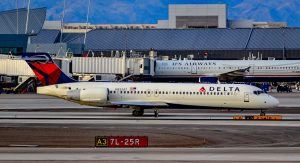http://www.csmonitor.com/Environment/2016/1123/Is-there-an-easy-way-to-help-koalas
Uncategorized
Transportation against Trafficking

American airports have a human rights problem: human trafficking. Trafficking in persons is a $32 billion industry which involves millions of people a year, and it commonly involves the movement of people (for sexual and labor exploitation). Airports provide large hubs for domestic and international travel. Thousands of US-born and foreign victims are trafficked through U.S. airports every year. Often they cannot ask for help, because of confusion, fear, or language barriers.
The Bush and Obama administrations both increased their focus on recognizing and fighting the problem of human trafficking overall. Yet the government began paying attention to human trafficking only 20 years ago, and remains woefully behind in combatting its spread. Current legislation targeting human trafficking is vague, buried in unrelated bills, and unfocused. Few laws focus on finding victims en route to situations of abuse, even though victims who stay in one location are harder to locate (and subsequently help). Considering the millions of people who travel through American airports every year, airline employees should have training on what human trafficking is and how to respond.
In June Congress passed the FAA extension bill. The bill included a clause mandating that all air flight attendants undergo training to spot signs of human trafficking and learn how to respond appropriately if human trafficking is suspected. However, the clause was buried inside hundreds of pages of other extensions, and only included flight attendants, not the broader group
Programs already exist to train airlines personnel how to spot signs of destress and react through proper channels. Airline Ambassadors International (AAI) developed such a program and had it approved by the Department of Homeland Security. Delta Airlines partnered with AAI in 2012 so all Delta employees could complete human trafficking training. Amtrak has a similar program in conjunction with the Department of State and the Department of Transportation, in which over 8,000 Amtrak employees were trained.
Since training programs approved by the government exist, common sense says we should pass a bill dedicated to training airline employees. While we’re on the issue, there’s one other group of people under-prepared to face the problem: DHS employees. The Department of Homeland Security does not have mandatory human trafficking training. Although the DHS unveiled an anti-human trafficking campaign in 2010 which aims to “more effectively combat human trafficking through enhanced public awareness, training, victim assistance, and law enforcement investigations”, many DHS employees are themselves untrained in the topic. This is an egregious oversight. Airline personnel should learn to recognize signs of distress, and they would be best backed up by an adequately trained security force. The government should fix the oversight immediately through a revision to the DHS training protocols alongside with a bill directing airlines to train their employees. Human trafficking is an enormous problem, and many solutions will be required if we want to properly address the topic. One of the things we can do is put protections in place to find victims while they’re in motion. Human trafficking is a scourge against human rights. Everyone benefits from the fight against it.
image credit: https://farm1.staticflickr.com/742/22295026198_a14f068900_b.jpg
Daylight Saving Time Doesn’t Mean Saving Money
In 1768, Benjamin Franklin proposed the idea that more light in the evening would encourage business activity and growth. Throughout the First and Second World Wars, Daylight Saving Time was enacted temporarily to save electricity by taking advantage of more natural light in the evening. In 1966, legislation implemented the national observance of Daylight Saving Time on the same basis of decreasing electrical expenses. Fifty years later, Daylight Saving Time now costs the United States around $434 million annually.
Daylight Saving Time is defined as the time period between spring and fall when clocks are set one hour ahead of standard time. In the United States, the change occurs on the second Sunday of March and first Sunday of November. This change requires reorganizational efforts that are expensive and harm worker health and productivity. Switching time twice a year increases workplace injuries, heart attacks and cyber loafing. Moreover, greater activity in the evening increases vehicular and air conditioning usage, offsetting any gains from decreased amounts of electricity. In Indiana, implementing Daylight Saving Time statewide in 2006 cost households about $9 million in increased electrical bills and about $1.7 to $5.5 million in pollution costs.

To save money, states can choose to opt out of the Daylight Saving Time federal mandate. This is not an unprecedented move. In Arizona where the hot climate generates high air conditioning usage, the state legislature voted in 1968 to abandon Daylight Saving Time after implementation greatly increased A/C costs and spurred public backlash. As a similarly warm Southern state, Texas also uses air conditioning heavily, so the increased costs for greater A/C usage after Daylight Saving Time are even costlier than in other areas of the country. Thus, in addition to expensive losses from decreased business productivity, Texas gives up millions in unnecessarily high gas and A/C expenses due to Daylight Saving Time. Like Arizona, Texas could save energy and money by abolishing the time change.
To eliminate Daylight Saving Time in Texas, legislation must be introduced and passed through the Texas legislature. During the 84th legislative session in Texas, Representative Dan Flynn (R – HD 2) introduced HB 150 which sought to abolish Daylight Saving Time in Texas. In addition to removing organizational costs associated with the time switch, the bill did not require any funding from the Texas budget. This bill has been re-filed for the upcoming legislative session which begins January 10, 2017. The legislation to remove Daylight Saving Time will again have to get approved by committees and then be voted on and passed in the House of Representatives and Senate, a multistep process that can take the entire session. Last session, HB 150 passed through committee to the House floor where it received 56 votes in support and 79 against (including two abstentions). Many legislators against the bill cited the benefit of extra daylight in the evening that allows for more activity after work. However, the significant air conditioning and transportation costs associated with Daylight Saving Time strip money from businesses and Texas citizens that could provide advantages and opportunities beyond an extra hour of afternoon sunlight.
Abandoning the use of Daylight Saving Time does not require a physical change and therefore does not require effort to change clocks or schedules. By saving on air conditioning, gas and lost commercial productivity, Texas would financially benefit from sticking to one time.

